Russian Roulette in Ukraine
NATO and Russia are passing a revolver back and forth in a game where luck eventually runs out. President Joe Biden meets with Russian President Vladimir Putin, Wednesday, June 16, 2021, in Geneva, Switzerland. (AP Photo/Patrick Semansky)
President Joe Biden meets with Russian President Vladimir Putin, Wednesday, June 16, 2021, in Geneva, Switzerland. (AP Photo/Patrick Semansky)
Editor’s note: The following story is co-published with Matt Bivens’ Substack newsletter, The 100 Days.
Before long, nobody would gamble or bet with him. And he grew so nervous that it was pitiful. One night, after we had finished dinner, he takes out his revolver, a ’92 model, and looks at me. … [H]e says, “Did you ever hear of Russian Roulette?”
When I said I had not, he told me all about it. When he was with the Russian army in Rumania, around 1917, and things were cracking up, so that their officers felt that they were not only losing prestige, money, family and country, but were being also dishonored before their colleagues of the Allied armies, some officer would suddenly pull out his revolver, anywhere, at the table, in a cafe, at a gathering of friends … [remove one or more bullets,] spin the cylinder, snap it back in place, put it to his head and pull the trigger.
— from “Russian Roulette,” a story by Georges Surdez published in Collier’s magazine in January 1937. It’s likely the first use in print of the term.
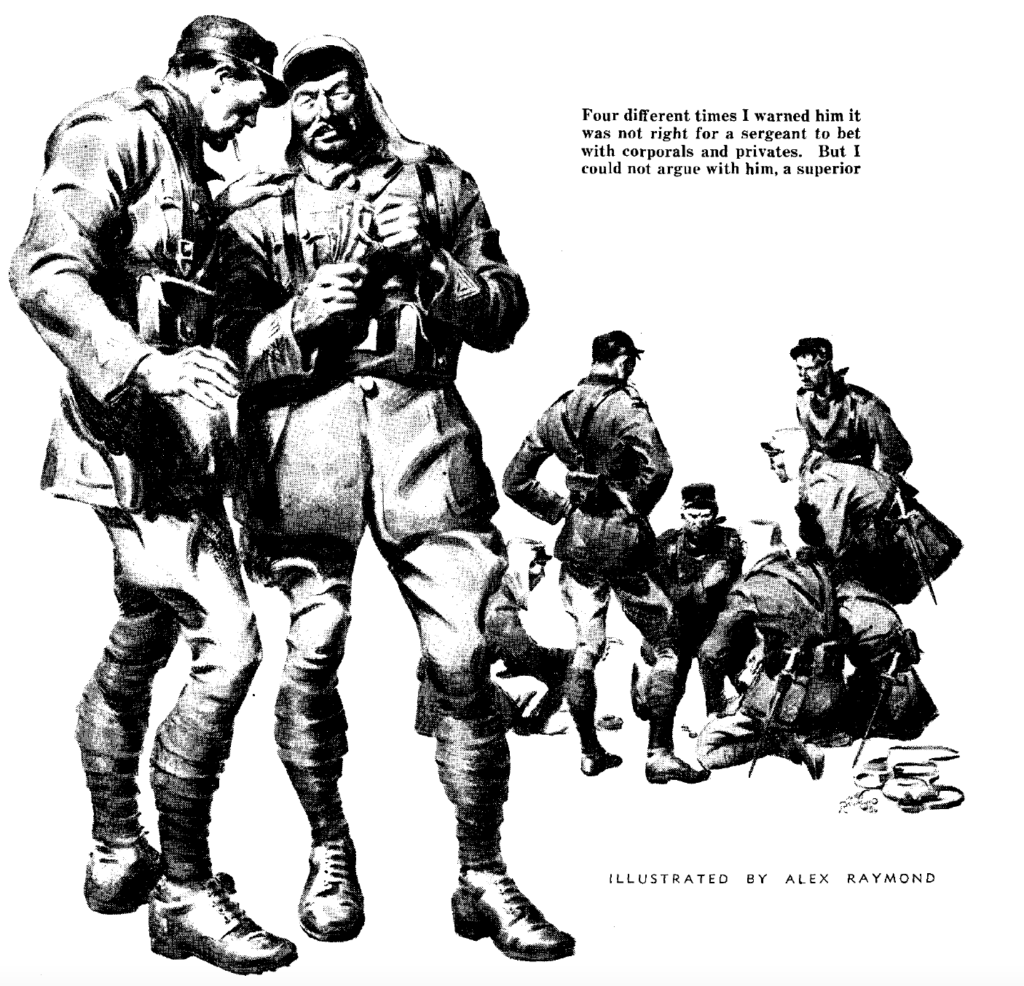
‘Don’t Say the S Word!’
It’s been 40 years, but Moscow still has bitter memories about Stingers. Near the end of the Soviet Union’s grinding war in Afghanistan, the Central Intelligence Agency dropped a few hundred of those shoulder-launched missiles into the mix. It was the 1980s, the Cold War was in full swing, and the CIA was keen to embarrass the Kremlin.
In fact, top U.S. officials now freely admit that CIA operations in Afghanistan began months before the Soviets even invaded — with the expectation that the CIA could provoke that very invasion. (That ought to prompt some skepticism about today’s repeated, shrill insistence that the Ukraine invasion was also “unprovoked”).
There’s an infamous interview with the U.S. President’s national security adviser, Zbigniew Brzezinski, published 25 years ago by France’s Le Nouvel Observateur, and always worth revisiting (with key parts in bold for emphasis):
Le Nouvel Observateur: The former director of the CIA, Robert Gates, stated in his memoirs [“From the Shadows”] that American intelligence services began to aid the mujahideen in Afghanistan six months before the Soviet intervention. In this period you were the national security adviser to President [Jimmy] Carter. You therefore played a role in this affair. Is that correct?
Brzezinski: Yes. According to the official version of history, CIA aid to the mujahideen began during 1980, that is to say, after the Soviet army invaded Afghanistan, December 24, 1979. But the reality, secretly guarded until now, is completely otherwise: Indeed, it was July 3, 1979 that President Carter signed the first directive for secret aid to the opponents of the pro-Soviet regime in Kabul. And that very day, I wrote a note to the president in which I explained to him that in my opinion this aid was going to induce a Soviet military intervention.
Le Nouvel Observateur: Despite this risk, you were an advocate of this covert action. But perhaps you yourself desired this Soviet entry into war and looked to provoke it?
Brzezinski: It isn’t quite that. We didn’t push the Russians to intervene, but we knowingly increased the probability that they would.
Le Nouvel Observateur: When the Soviets justified their intervention by asserting that they intended to fight against secret involvement of the United States in Afghanistan, people didn’t believe them. However, there was a basis of truth. You don’t regret anything today?
Brzezinski: Regret what? That secret operation was an excellent idea. It had the effect of drawing the Russians into the Afghan trap and you want me to regret it? The day that the Soviets officially crossed the border, I wrote to President Carter: We now have the opportunity of giving to the U.S.S.R. its Vietnam war. Indeed, for almost 10 years, Moscow had to carry on a war unsupportable by the government, a conflict that brought about the demoralization and finally the breakup of the Soviet empire.
Le Nouvel Observateur: And neither do you regret having supported Islamic fundamentalism, having given arms and advice to future terrorists?
Brzezinski: What is most important to the history of the world? The Taliban or the collapse of the Soviet empire? Some stirred-up Muslims, or the liberation of Central Europe and the end of the Cold War?
Brzezinski gave that interview three years before the 9/11 terrorist attacks, otherwise he’d have been less flippant. The same CIA program that delivered Stinger missiles also recruited (and radicalized) Muslims from around the world to join Afghanistan’s anti-Soviet jihad. Before long, the CIA’s “stirred-up Muslims” gave rise to al-Qaeda, the terrorist group that first tried to blow up New York’s World Trade Center in 1993 with a huge bomb in a van parked under the North Tower; and then, when the building did not collapse sideways into the South Tower as planned, struck again eight years later, on September 11, 2001, with hijacked commercial airliners.
September 11, of course, brought about the 20-year American invasion of Afghanistan.
So, to summarize:
- CIA covert op (helping to topple a pro-Soviet government) provokes Soviet invasion of Afghanistan;
- which begets CIA “Stinger missiles / stirring up Muslims” project;
- which midwives al Qaeda and brings about the September 11 terror attacks;
- which provokes American invasion of Afghanistan.
The good news: Every step of the way, people made a ton of money. It’s sort of like “Circle of Life” from “The Lion King,” if that had instead been a song about war-profiteering and death.
Anyway, the CIA’s delivery of Stingers to Afghan guerrillas, who used them to help drive out the invading Soviet forces — that’s important backstory, if you want to understand the emotional impact of providing Stingers to Ukraine.
Stingers were among the first weapons we provided after Russia’s invasion two years ago (February 2022). At the time, we clearly understood it as a flirtation with disaster, Russian roulette-style: What if this so infuriated the Kremlin that things spun out of control, and we ended up in an American-Russian war — even a nuclear war? As The New York Times reported just three weeks after the Russian invasion:
“Given Russia’s bloody history with Stinger missiles [in Afghanistan], American officials have been wary of advertising their use in Ukraine. … Even after [it was announced] that Stinger missiles were among the munitions being sent to Ukraine, spokespeople avoided using the S-word from the lecterns at the White House and Pentagon.”
But whatever. We spun the cylinder, put the gun to our head, pulled the trigger on Stinger missiles, and — click.
Phew. Nothing happened.
Was it because our press secretaries so cleverly avoided saying “the S-word”?
Maybe!
Don’t Kid Yourself
Next time around, we blinked and lost our nerve: Five weeks into Russia’s invasion of Ukraine (April 1, 2022), we canceled plans to test a U.S. intercontinental ballistic missile, on grounds that we didn’t want nuclear war over a misunderstanding. After all, the U.S. government said then, we must “bear in mind the risk of miscalculation and take steps to reduce those risks.”
Russian roulette is not for the faint of heart!
Not even the Russians always like it — though they can be inveterate gamblers, and arguably invented this sickest of games. The 1937 Collier’s magazine article cited above might have been the first use in print of “Russian roulette,” but it purports to describe a behavior current among tsarist Russian military officers. A variant of the game is also described nearly 100 years earlier, in “A Hero of Our Time,” Mikhail Lermontov’s short story collection about such officers.
Who plays Russian roulette? Apparently, sometimes the answer is: an honorable Russian officer, frustrated and mortified by an absurd, dishonorable situation. Vladimir Putin might fit that picture.
For 30 years, he and others had asked ever-more-pointed questions about NATO — why is it still around? Why does it keep expanding? If it’s so peaceful, can Russia join? — only to get off-hand, contemptuous replies. Meanwhile, the CIA continued to openly, smugly metastasize its operations in Ukraine — with U.S Senators like Lindsey Graham and Amy Klobuchar literally going to Ukraine to cheer on “our side” in a civil war that from 2014 to 2022 would kill 14,000 people. Here’s Graham braying that “2017 will be the year of [U.S. government-funded] offense!”
That Ukrainian civil war, in turn, had at least partly been brought about by the CIA in the first place (shades of Afghanistan). The New York Times, in a major and detailed report last month, laid out how deeply the CIA has been involved in Ukraine “for more than a decade.” (!) That report contained many gems, but how about this one:
Toward the end of 2021, according to a senior European official, Mr. Putin was weighing whether to launch his full-scale invasion when he met with the head of one of Russia’s main spy services, who told him that the C.I.A., together with Britain’s MI6, were controlling Ukraine and turning it into a beachhead for operations against Moscow.
But the Times investigation found that Mr. Putin and his advisers misread a critical dynamic. The C.I.A. didn’t push its way into Ukraine. U.S. officials were often reluctant to fully engage, fearing that Ukrainian officials could not be trusted, and worrying about provoking the Kremlin.
I see. Putin misread the dynamic. Yes, the CIA and MI6 “were controlling Ukraine and turning it into a beachhead for operations against Moscow” — but the dynamic was one of reluctance. (Which is laughable, and to be explored another day.)
So, NATO is creeping insidiously forward, CIA has taken over Ukraine, and Putin is losing face. “Things are cracking up.” His prestige is on the line, he’s being dishonored before colleagues, and suddenly he’s ready to
pull out his revolver, anywhere, at the table, in a cafe, at a gathering of friends …
and he orders the invasion.
Russian troops rolled into the friendly Donbas of eastern Ukraine, and also down through Belarus from the north (briefly taking over the ghost town of the Chernobyl nuclear plant) on the way to Kyiv. They met stiff defiance. Ukrainians and Russians are actually similarly tough people — and the Kremlin was clearly startled both by the Ukrainian resistance, and by the furiously loud and assertive Western response, including the early supply of shoulder-fired Stinger and Javelin missiles.

By day 12 of the invasion, an alarmed Kremlin was offering to end the war “in a moment” if Ukraine would meet their main demands — chief among them, not joining the anti-Russian NATO military alliance. Russian and Ukrainian negotiators actually struck a tentative and detailed peace agreement in Istanbul (March 2022). In a sensible world, American and European world leaders would have endorsed it with relief. Heck, President Joe Biden could have flown to Istanbul and taken over as Master of Ceremonies, no doubt to the intense embarrassment and humiliation of Vladimir Putin. Biden could have collected a Nobel Peace Prize for that.
And early on, Biden already understood how dangerous all this was. There’s a great video of him addressing House Democrats (March 11, 2022), where he earns applause as he promises small arms and shoulder-launched missiles. Then the room gets pretty quiet when he continues: “But, look — the idea that were gonna send in offensive equipment, and have planes and tanks and trains going in, with American pilots and American crews — just understand, and don’t kid yourself — no matter what y’all say — that’s called World War Three. Okay?”
But gambling is intoxicating — and contagiously so. Particularly when the stakes are high, it can be outright addictive, as bad as heroin or alcohol. Putin had insisted on launching us into this deadly game of chance; since luck seemed to be breaking our way, why not play a few more rounds? Especially when everyone is making so much money!
Our national security establishment, eyes glistening with mad excitement, ordered the Ukrainians to scrap that peace deal and keep fighting. As The Washington Post reported at the time, “For some in NATO, it’s better for the Ukrainians to keep fighting, and dying, than to achieve a peace that comes too early or at too high a cost.”
Define “too early” or “too high a cost”, you say? The Post specifically cited only one such high cost: A Ukrainian pledge not to join NATO. That would be a heresy too far. It’s also the exact heresy, by the way, enshrined in Ukraine’s 1991 declaration of independence from the Soviet Union, in which it vowed to become “a permanently neutral state that does not participate in military blocs” (whether NATO or Russian) or have anything to do with nuclear weapons.

‘Look What We Just Did!’ — ‘Wait, Sorry, Don’t Look!’
As those first months of the war unspooled, tensions between America and Russia over Ukraine steadily grew. We froze hundreds of billions of dollars held abroad by Russia’s Central Bank (March 2022), in an unprecedented and open attempt to crash Russia’s currency, provoking Russians to line up at ATM machines across 11 time zones. Our national security agents crowed publicly about helping the Ukrainian forces sink the Moskva warship (April 2022); bragged about guiding the targeted killing of Russian generals (May 2022); openly backed the ceremonial publication in Ukraine of an enemies list of 72 foreigners — including many prominent Americans, among them Senator Rand Paul, former Congresswoman Tulsi Gabbard, journalist Glenn Greenwald, and university professors John Mearsheimer and Jeffrey Sachs — who were labeled “information terrorists” and “war criminals” (July 2022); and watched without comment as terror attacks inside Russia by CIA-trained killers started eliminating Ukraine’s enemies. (The assassination victims who had previously been labeled “information terrorists” could then be publicly crossed off of the kill list — with “Liquidated” written in a red line across their faces, on a website that simpers about being located in Langley, Virginia, i.e. out of CIA headquarters):

And sure, there was some hand-wringing about … well, you know. (No one ever likes this part so I’ll make it quick: American and Russian nuclear weapons are designed to be launched irreversibly after just several minutes of consideration and could kill millions in an afternoon and billions in coming years by crashing the climate the food supplies and all of civilization — that’s it! I won’t bring it up again!)
Russian roulette at that scale is pretty … terrifying? Exhilarating?
Either way, our nervous-excited U.S. government rebuked its secret agents, who were so boastfully running their mouths to the press. When news broke of how we’d helped target Russian generals for assassinations, a White House statement declared that no intel was provided to the Ukrainians “with the intent to kill Russian generals.” When news broke about how we’d helped sink Russia’s Black Sea flagship, a Pentagon statement immediately said no intel was provided to the Ukrainians with “specific targeting information for the Moskva” — we weren’t involved! the Pentagon said, we didn’t even know about it!
Same for the car bomb in Moscow that killed Dugina (August 2022), as The New York Times reported:
The United States took no part in the attack, either by providing intelligence or other assistance, officials said. American officials also said they were not aware of the operation ahead of time and would have opposed the killing had they been consulted. Afterward, American officials admonished Ukrainian officials over the assassination, they said.
But even as some in the U.S. government were nervously backpedaling from the Russian roulette table, others eagerly played on.
The U.S. President in early March had warned his Democratic allies in Congress against sending fighter planes or tanks. “[D]on’t kid yourself — no matter what y’all say — that’s called World War Three,” he’d said.
But is it? Is it really? How can we know until we spin the cylinder, put the gun to our head and pull the trigger? C’mon Joe: Don’t you want to find out?
Billions of dollars were staked on this gamble. The behind-the-scenes defense industry lobbying pressure on Congress must have been enormous, and of course schemers came up with the predictable workarounds: Let the Eastern Europeans give Ukraine their old Soviet-made weapons, and then they can buy new American replacements. So, even as Biden’s “tanks = World War III” warning hung in the air, Poland was already supplying Ukraine with 240 Soviet-made T-72 tanks — nearly half its national tank fleet — with the understanding that they would be replaced with 250 made-in-the-U.S.A. Abrams tanks. Slovakia also donated an ancient, Soviet-made air defense missile system — with the understanding it would be replaced with U.S. Patriot missile air defense systems. And so on.
The behind-the-scenes defense industry lobbying pressure on Congress must have been enormous, and of course schemers came up with the predictable workarounds.
Admittedly it was a clever solution: NATO members have to buy American anyway — that business is worth unGodly amounts of money, so much so that it’s really the driving force behind the expansion of NATO. But it can take many months to train crews in use of new, foreign tech. Meanwhile, the Ukrainians, ex-Soviets themselves, could quickly come up to speed on Soviet-era tech.
By late March, just two weeks after his “Don’t kid yourself” warning, President Biden was bellowing about Putin from a podium in Warsaw, “For God’s sake, this man cannot remain in power!”
But such bluster aside, the U.S. President still lacked the spirit of commitment a good game of Russian roulette truly requires. Yes, he had greenlit the American tanks-for-Polish tanks trade — but he and his generals still did not trust the Ukrainians with anything they could use to attack, say, Moscow or St. Petersburg. So, no long-range missiles — and certainly no planes! As The New York Times summarized the testimony of our top generals, as provided in closed-door Congressional testimony:
In contrast to a Javelin antitank missile that has only limited range on the battlefield, a MIG-29 could fly from Kyiv to Moscow in a matter of minutes, the generals said, a capability that the Kremlin might see as a direct threat.
What about another workaround? Why not have Poland give Ukraine its old Soviet-made MiG-29 fighter planes? “Too escalatory,” the White House said. As to speculation about giving the Ukrainians long-range missiles, Biden stood on the White House lawn in late May 2022 and told reporters: “We are not going to send Ukraine rocket systems that can strike into Russia.” Period.
Just one day later, we announced we actually were sending HIMARS rocket systems to Ukraine, and those certainly could strike into Russia. But we still didn’t fully trust the Ukrainians when they promised they’d never do that. So, as would later be reported, we secretly modified the rocket systems to only have a range of about 50 miles. Which sort of feels like cheating — like going through the motions of a good game of Russian roulette, but only after taking all of the bullets out of the revolver and spinning an empty cylinder.
Ukraine: ‘We Invite You to Test Your Weapons on Us!’
And yet, there was still plenty of terrifying-exhilarating gambling going on. All through that first spring of the war, for example, we saw skirmishes on the site of the Zaporizhzhiya nuclear power plant — a Chernobyl-design set of reactors, the largest in Europe, and the first operating civilian nuclear power plant ever to come under armed attack. It was seized by Russian forces in early March, and shelled, often by Ukrainian drones and artillery, in July, August and September, sometimes so that power would be cut off to the reactors.
Not one government seriously tried to do anything about it.
This was some next-level, professional-grade Russian roulette! And it has continued, both at Zaporizhzhiya and other nuclear power sites in Ukraine.
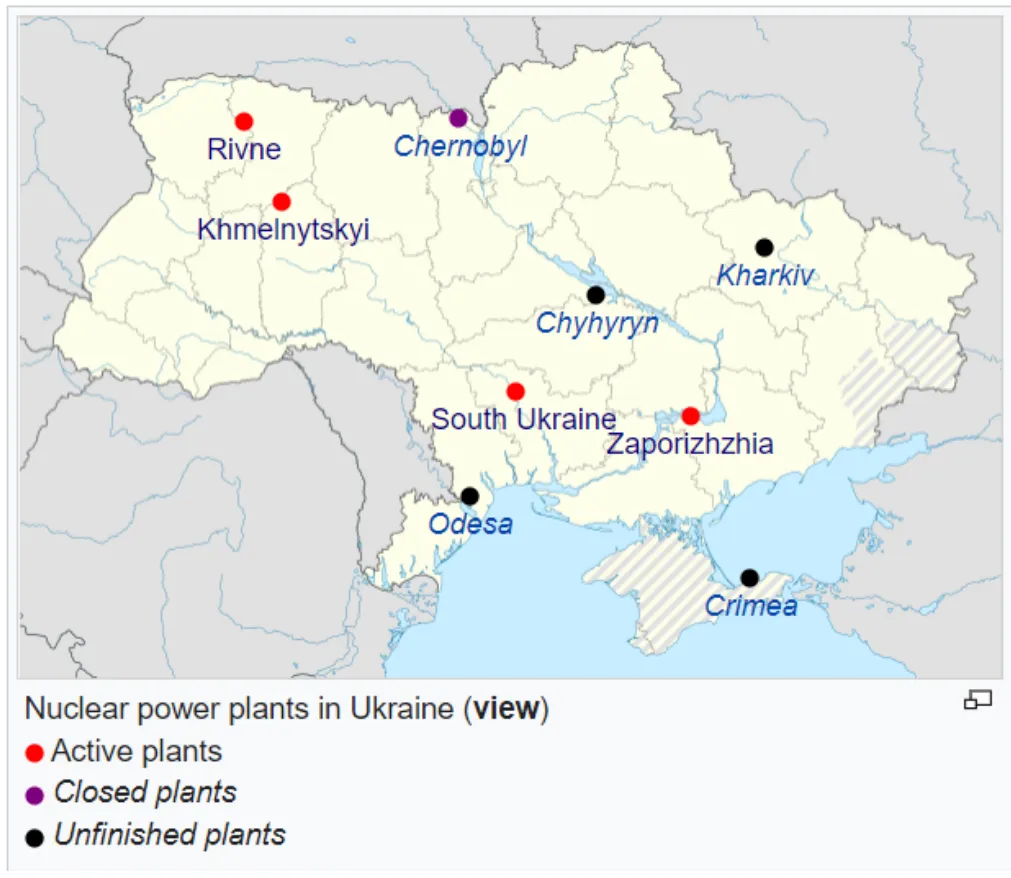
It’s staggeringly cavalier. Enormous amounts of emotional energy have been invested into “who gets Crimea” — but if an artillery attack sets fire to the reactors and spent nuclear fuel pools some 300 miles north, then depending on the prevailing winds, that entire peninsula could easily become uninhabitable.
Naturally, the games went on. The Ukrainian / CIA-sponsored enemies list — which had been publicly unveiled at a round table held by a U.S. State Department-funded organization, apparently with State Department staff present — remained up despite months of Congressional complaints. Versions of this as a kill list had actually been circulating for years; the entry boasting of the “liquidation” of Italian journalist Andy Rochelli, apparently for civil war reporting insufficiently loyal to Ukraine’s preferred narratives, dates back to 2014:

Instead of ordering Ukraine to take American civilians off of its list of targets, our national security establishment invited the Ukrainian defense minister to a NATO think tank conference (July 2022), where he enthused how “Ukraine is now essentially a testing ground” for murderous military tech: “We are inviting arms manufacturers to test new products here.” The White House promised (August 2022) to deliver a U.S.-Norwegian-made missile air defense system — it was felt to be purely defensive and so unlikely to escalate matters. The Nord Stream pipeline was spectacularly destroyed (September 2022).
“Ukraine is now essentially a testing ground” for murderous military tech: “We are inviting arms manufacturers to test new products here.”
Days after Nord Stream, a British spy plane with about 30 Royal Air Force personnel on board flew along the coast of Crimea — gathering intel of the kind not used to sink the Moskva and not used to assassinate generals — and was met by a Russian fighter that fired a missile at it. The missile was launched accidentally, apparently due to a miscommunication between the fighter pilot and his ground staff; and it only did not down the Brits because the missile itself glitched and missed.
I don’t even know how to score that in Russian roulette. The decision to order British spy planes to patrol Crimea’s coast days after Nord Stream must count as one insane spin of the cylinder and click of the trigger; the Russian pilot’s decision to buzz the Brits with just 15 feet to spare counts as another spin-and-click; the accidental missile launch is a third spin-and-click; the missile then not working is a fourth … It’s like our luck just never runs out!
Steadfast Lunacy
By October 2022, after about seven months of war, top officials throughout the Biden administration were apparently thoroughly frightened. Russia’s initial push toward Kyiv from the north had failed, and Russian forces were falling back into the friendlier east Donbas. It was a shambolic military performance, and it raised a terrifying possibility: what if NATO-backed Ukrainians could actually push the larger Russian military out? If so, according to U.S. intelligence intercepts, that could well be met with Russia using battlefield nuclear weapons.
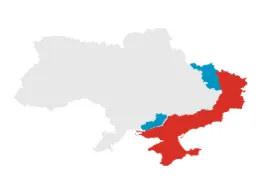
This was the month Biden told his rich campaign donors privately that we were facing a possible “Armageddon” — comments hurriedly spun at the time as the President talking out of school, and not supported by the intel. Two weeks ago, however, The New York Times — citing 18 months of interviews “with administration officials, diplomats … and military officials who recounted the depth of their fear (my emphasis) in those weeks” — revealed that, yes, that was exactly what the intel said: If Ukraine ever did somehow truly “start winning,” then nukes could truly start dropping.
And that right there was exactly why some of us always opposed supplying the Ukrainians with massive amounts of U.S. weaponry: Because it would lead to a nuclear disaster if it worked; and to the criminal massacre of tens of thousands if it did not.
The Biden Administration was so alarmed about looming nuclear war in those days that pretty much every national security Cabinet member got on the phone to a Russian counterpart. Biden also “sent a message to Mr. Putin that they had to set up an urgent meeting of emissaries.” The urgent face-to-face that resulted in November 2022 was between our spy chiefs — not our diplomats. Interestingly, per The New York Times account, the Russian spy chief “apparently thought the CIA director had been sent to negotiate an armistice agreement that would end the war … It took some time for Mr. Burns to disabuse Mr. Naryshkin of the idea that the United States was ready [to talk peace terms].”
Thus was wasted yet another opportunity to end the mass killing. Instead — apparently with real, time-consuming effort — we disabused the Russian side of the idea that we had any interest in peace. Apparently they couldn’t believe it! And we continued gleefully moving Raytheon product, under a defense secretary fresh from the Raytheon board of directors.
Meanwhile, we were all getting much, much better at Russian roulette!
So naturally, both America and Russia simultaneously in October 2022 geared up for separate, full-scale nuclear war games.
Ours was called “Steadfast Noon.” There’s was called “Thunder.”
As we prepared to pull the trigger on Operation Steadfast Noon, of course, the worriers and faint of heart were fussing and moaning. The UN Secretary General even warned that we were all “just one misunderstanding, one miscalculation away from nuclear annihilation” — as if that’s not how Russian roulette works!
Right before the dueling nuclear war games began, a Ukrainian truck bomb detonated on the 12-mile Kerch Bridge (October 2022) that connects Crimea to the mainland. It was timed by Ukrainian covert agents to go off next to a train of fuel tanks traveling on a parallel bridge span. The explosion killed five civilians and sent a chunk of the bridge into the sea.

Russia called it terrorism and a day later rained 84 cruise missiles down across Ukraine, as well as 24 kamikaze drones, killing at least 14 civilians and briefly crippling critical energy infrastructure. This was a significant escalation.
But whatever. It was time to play!
We spun the cylinder on massive competing nuclear war games at the height of an international crisis, pulled the trigger, and — click.
We got to keep playing.
Interestingly, a month later (November 2022), a missile came screaming out of the war zone and into southern Poland. It destroyed a grain storage facility and killed two Polish citizens. Was this the long-feared “Russian attack on NATO”? Would the U.S. Army’s 101st Airborne — some 4,700 “Screaming Eagles” soldiers standing alert in Romania — now stream across Ukraine’s southern border to join the war?
No. Russia had been raining missiles down across Ukraine ever since things escalated with the Crimean bridge attack — many of those missiles would be shot down by Ukrainian and NATO-provided air defenses, and everyone quickly concluded the missile that struck Poland was an off-course Ukrainian air defense rocket. (Ukraine denied that.)
Some asked nervously how this might have played out if it had occurred a month earlier, back when NATO and Russia had been exercising the nuclear war machinery. Others saw the event as a reason to call even more loudly for Ukraine to be given planes and missiles, and by December 2022, as Ukraine’s President Volodymyr Zelensky addressed the U.S. Congress, it was announced we would send Patriot air-defense missiles.
But as that first winter of the war set in, the White House stood firm: Planes and long-range missiles or drones — things Ukraine could use to blow up things inside Russia, like the Kremlin — that was all off-limits. Also off-limits, The New York Times reminded us, was the use of assassinations, car bombs or other terrorist tactics against Russian civilians or political leaders.
All of those red lines and more would be rapidly crossed in the war’s second year.
Your support matters…Independent journalism is under threat and overshadowed by heavily funded mainstream media.
You can help level the playing field. Become a member.
Your tax-deductible contribution keeps us digging beneath the headlines to give you thought-provoking, investigative reporting and analysis that unearths what's really happening- without compromise.
Give today to support our courageous, independent journalists.




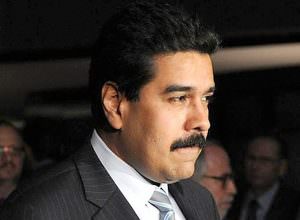
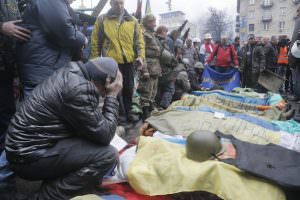
You need to be a supporter to comment.
There are currently no responses to this article.
Be the first to respond.